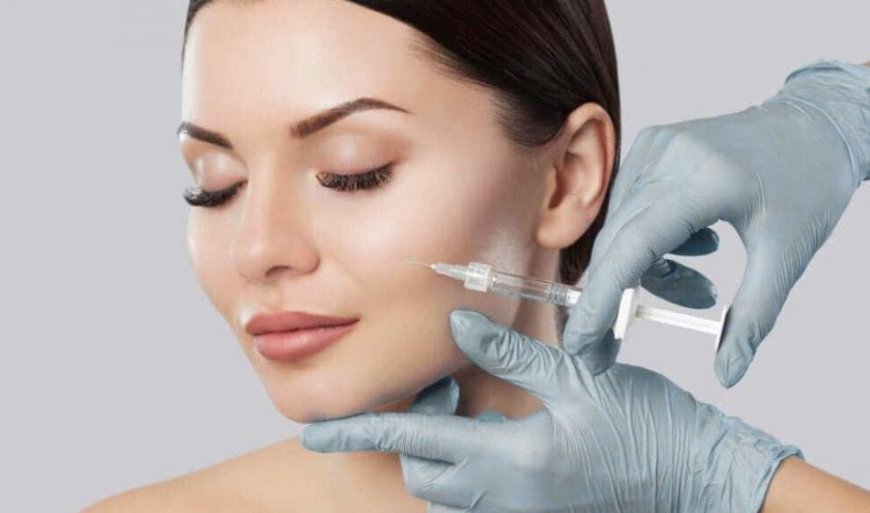What is the danger zone for fillers?

Dermal fillers are a popular cosmetic treatment used to restore volume, enhance facial contours, and reduce the appearance of wrinkles. While generally considered safe when performed by qualified professionals, there are areas of the face, known as "danger zones," where filler injections require extra caution. Understanding these zones is essential for both practitioners and patients to minimize risks and ensure optimal results.
Understanding Dermal Fillers
Dermal fillers are gel-like substances injected beneath the skin to enhance facial features or correct signs of aging. They can be composed of hyaluronic acid, calcium hydroxylapatite, or other biocompatible materials. When administered correctly, fillers provide a non-invasive alternative to surgery, delivering natural-looking results with minimal downtime. If you’re considering Dermal Fillers in Islamabad, consulting an experienced professional is vital for a safe and effective outcome.
The Danger Zones for Fillers
The term “danger zone” refers to specific facial areas where improper filler injection can lead to complications, including vascular occlusion, tissue necrosis, or blindness. Below are the key danger zones:
1. The Glabella (Frown Lines)
The glabellar region, located between the eyebrows, is highly vascularized. Injecting fillers into this area requires precision to avoid occluding the supratrochlear and supraorbital arteries. Complications in this region can lead to skin necrosis or, in rare cases, blindness if the filler material enters the ophthalmic artery.
2. The Nose (Nasolabial Region)
The nose is another high-risk area due to its intricate vascular network. The dorsal nasal artery and branches of the facial artery run through this zone, making filler injections potentially hazardous. Improper technique can cause vascular compromise, leading to serious complications like skin damage or ischemia.
3. The Tear Troughs (Under-Eye Area)
While fillers in the tear troughs can effectively reduce under-eye hollows, this area’s thin skin and proximity to major blood vessels make it particularly sensitive. Incorrect injection techniques can result in visible lumps, swelling, or bruising.
4. The Lips
The lips and perioral area are rich in blood vessels, including the superior and inferior labial arteries. Overfilling or injecting too superficially can cause lumps, asymmetry, or vascular compromise. Proper training and technique are essential for safe and aesthetically pleasing results.
5. The Forehead
The forehead’s vascular complexity, involving the supratrochlear and supraorbital arteries, makes it another danger zone. Fillers injected incorrectly in this area can lead to complications such as skin discoloration or necrosis.
Common Risks Associated with Danger Zones
Injecting fillers into danger zones can lead to several complications, including:
- Vascular Occlusion: When filler material blocks a blood vessel, leading to restricted blood flow and potential tissue death.
- Blindness: Although rare, injecting into certain arteries can cause filler material to travel to the eyes, resulting in vision loss.
- Skin Necrosis: Inadequate blood supply to the skin can cause tissue death, leading to scars or disfigurement.
- Swelling and Bruising: Over-injection or improper technique can cause prolonged swelling or visible bruising.
How to Minimize Risks
1. Choose an Experienced Practitioner
Selecting a qualified and experienced injector is the most critical step in minimizing risks. A professional who understands facial anatomy and has expertise in dermal fillers can significantly reduce the likelihood of complications.
2. Use Cannulas When Appropriate
Cannulas are blunt-tipped tools used for injecting fillers. They reduce the risk of piercing blood vessels and are often preferred in high-risk areas.
3. Aspirate Before Injection
Aspiration involves pulling back on the syringe plunger before injecting to ensure the needle is not in a blood vessel. This simple step can help prevent vascular complications.
4. Inject Slowly and in Small Amounts
Gradual injection allows the practitioner to monitor the skin’s response and adjust the technique as needed, minimizing the risk of overfilling or complications.
When to Seek Immediate Help
It’s essential to recognize the signs of complications and seek medical attention promptly. Symptoms to watch for include:
- Severe pain or discomfort
- Sudden changes in vision
- Discoloration or blanching of the skin
- Persistent swelling or bruising
Cost and Accessibility of Dermal Fillers
The cost of dermal fillers varies based on factors such as the type of filler, the practitioner’s expertise, and the number of syringes required. If you’re considering this treatment, it’s worth exploring the Cost of Dermal Fillers in Islamabad, Pakistan to plan your budget accordingly.
Final Thoughts
Understanding the danger zones for fillers is crucial for ensuring safety and achieving desired results. While complications are rare when performed by skilled professionals, awareness of the risks can help you make informed decisions. Always prioritize expertise and communicate openly with your practitioner to minimize risks and enhance your experience.
For those seeking high-quality and safe dermal filler treatments, the Royal Cosmetic Surgery Clinic in Islamabad offers expert care tailored to your needs. Consult their professionals for personalized guidance and flawless results.
What's Your Reaction?



























